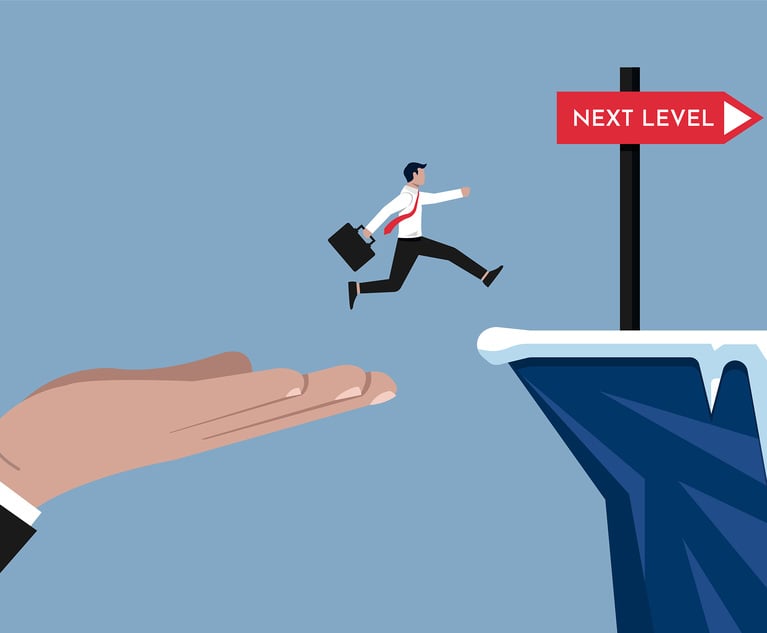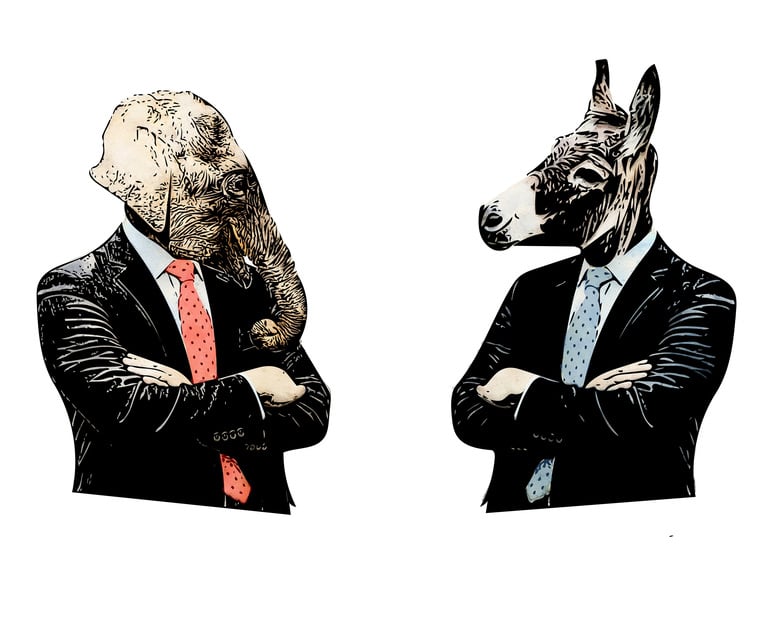The 411 on Thank You Notes
For the ASAP corporate cultures of 2009, don't look to Emily Post for guidance on thank you notes. Just read this column.
September 20, 2009 at 08:00 PM
6 minute read
Since this summer's career advice columns focused on interviewing, it seems fitting to close the season with some guidance on the next step. Post-interview, a thank you note is expected. But given the lawyerly craving to continually persuade, many candidates commit the error of trying to do too much with a thank you note.
Before we get to content, however, let me put an end to the handwritten note versus e-mail debate. Once upon a time, a handwritten note was viewed as perfectly appropriate for a thank you note. Nonetheless, I used to advise candidates to choose a typewritten letter over a handwritten note, mainly to avoid poor penmanship, but also because I felt that a professional letter was better received. I cannot pinpoint the exact point in time when all snail mail became quaint and old school, but it's been at least a few years.
E-mail your thank you notes. Do it within 24 hours of your interview. A quick turnaround reinforces your interest level in the position and, more importantly, sends the message that you will fit within a culture that values speed and responsiveness–essentially the prevailing corporate culture at almost every place of employment today. Still, the method of communication is less important than the content.
On content, please understand that a thank you note is a thankless exercise. A thank you note won't change any opinions. The interviewer has already decided if he or she likes you. I have never experienced a situation in which a corporate client has moved a candidate up its preference list based on a thank you note. However, I have experienced the almost unthinkable opposite result. A candidate can shoot herself in the foot with a thank you note. Examples of what not to do:
1. Never send anything with a misspelling.
2. Do not send a list of all the reasons why you are perfect for the job.
3. Do not point out a self-perceived mistake you made in the interview and try to clarify something you said.
In short, don't try to use the thank you note as another vehicle to persuade and sell yourself. The interview itself was the time for that.
Good thank you notes follow the KISS rule. Yes: Keep It Simple, Stupid. And short. The sole purpose of the thank you note is to reinforce your interest level. Write one sentence articulating your appreciation for the interviewer's time, and another sentence confirming your interest level in the position. Proofread the e-mail three times, do not rely on spellcheck, and then hit the send button.
There are two worthy exceptions to the KISS rule. If the interviewer specifically asks you for additional information or post-interview examples of your work in a certain area, of course provide that in as much detail as you deem appropriate. The second exception is a valuable extension of the reference-checking process. Your interview may yield an “it's a small world” moment when you and the interviewer mention a mutual acquaintance or professional contact. If this individual is not part of your standard reference package, call the mutual acquaintance ASAP. Assuming you get permission and you are confident about what this mutual acquaintance will say about you, mention her in your thank you note, offer the phone number, and encourage the interviewer to speak with her.
Since this summer's career advice columns focused on interviewing, it seems fitting to close the season with some guidance on the next step. Post-interview, a thank you note is expected. But given the lawyerly craving to continually persuade, many candidates commit the error of trying to do too much with a thank you note.
Before we get to content, however, let me put an end to the handwritten note versus e-mail debate. Once upon a time, a handwritten note was viewed as perfectly appropriate for a thank you note. Nonetheless, I used to advise candidates to choose a typewritten letter over a handwritten note, mainly to avoid poor penmanship, but also because I felt that a professional letter was better received. I cannot pinpoint the exact point in time when all snail mail became quaint and old school, but it's been at least a few years.
E-mail your thank you notes. Do it within 24 hours of your interview. A quick turnaround reinforces your interest level in the position and, more importantly, sends the message that you will fit within a culture that values speed and responsiveness–essentially the prevailing corporate culture at almost every place of employment today. Still, the method of communication is less important than the content.
On content, please understand that a thank you note is a thankless exercise. A thank you note won't change any opinions. The interviewer has already decided if he or she likes you. I have never experienced a situation in which a corporate client has moved a candidate up its preference list based on a thank you note. However, I have experienced the almost unthinkable opposite result. A candidate can shoot herself in the foot with a thank you note. Examples of what not to do:
1. Never send anything with a misspelling.
2. Do not send
3. Do not point out a self-perceived mistake you made in the interview and try to clarify something you said.
In short, don't try to use the thank you note as another vehicle to persuade and sell yourself. The interview itself was the time for that.
Good thank you notes follow the KISS rule. Yes: Keep It Simple, Stupid. And short. The sole purpose of the thank you note is to reinforce your interest level. Write one sentence articulating your appreciation for the interviewer's time, and another sentence confirming your interest level in the position. Proofread the e-mail three times, do not rely on spellcheck, and then hit the send button.
There are two worthy exceptions to the KISS rule. If the interviewer specifically asks you for additional information or post-interview examples of your work in a certain area, of course provide that in as much detail as you deem appropriate. The second exception is a valuable extension of the reference-checking process. Your interview may yield an “it's a small world” moment when you and the interviewer mention a mutual acquaintance or professional contact. If this individual is not part of your standard reference package, call the mutual acquaintance ASAP. Assuming you get permission and you are confident about what this mutual acquaintance will say about you, mention her in your thank you note, offer the phone number, and encourage the interviewer to speak with her.
This content has been archived. It is available through our partners, LexisNexis® and Bloomberg Law.
To view this content, please continue to their sites.
Not a Lexis Subscriber?
Subscribe Now
Not a Bloomberg Law Subscriber?
Subscribe Now
NOT FOR REPRINT
© 2025 ALM Global, LLC, All Rights Reserved. Request academic re-use from www.copyright.com. All other uses, submit a request to [email protected]. For more information visit Asset & Logo Licensing.
You Might Like
View All
Beyond the Title: Developing a Personal Brand as General Counsel

Step 1 for Successful Negotiators: Believe in Yourself
Trending Stories
- 1Decision of the Day: Uber Cannot Be Held Vicariously Liable for Driver's Alleged Negligent Conduct
- 2TikTok Law and TikTok Politics
- 3California Supreme Court Vacates Murder Conviction in Infant Abuse Case
- 4New York’s Proposed Legislation Restraining Transfer of Real Property
- 5Withers Hires Lawyers, Staff From LA Trusts and Estates Boutique
Featured Firms
Law Offices of Gary Martin Hays & Associates, P.C.
(470) 294-1674
Law Offices of Mark E. Salomone
(857) 444-6468
Smith & Hassler
(713) 739-1250








